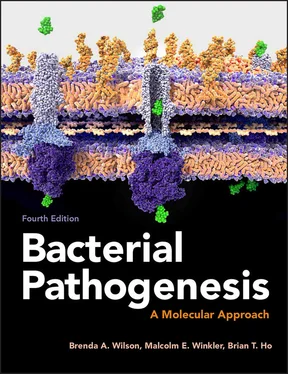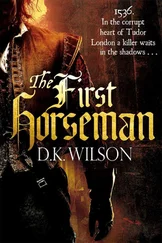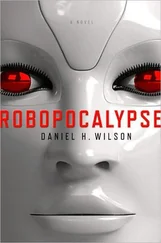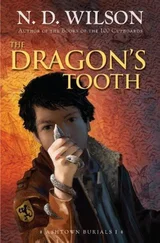Manganese, like iron, is required for many essential enzymes in bacteria. Given its importance for bacterial growth, the host has also devised strategies to restrict bacterial invaders from acquiring manganese. In phagosomes, the divalent-metal ion transporter NRAMP1 is an integral membrane protein that depletes manganese, iron, and other essential metals from the phagosomal compartment to effectively starve the engulfed bacteria. Genetic mutations in the gene encoding NRAMP1 are associated with susceptibility to tuberculosis, leprosy, inflammatory bowel disease, and autoimmune diseases.
Calprotectin is an abundant cytoplasmic protein that is constitutively expressed in neutrophils, but it can also be expressed in other cell types during infection. Extracellular concentrations of calprotectin can exceed 1 mg/ml at sites of infection. Calprotectin acts as a dimer of two proteins (S100A8 and S100A9) that bind and sequester the essential nutrients manganese and zinc with high affinity. The sequestration of these metal ions by the host inhibits pathogen growth and can render the invading bacteria more sensitive to the oxidative burst produced by phagocytic cells. Calcium binding enhances the affinity of calprotectin for manganese and zinc. This suggests that calcium functions as a molecular switch, keeping the protein in a low affinity state within the host cell cytoplasm, where calcium concentrations are very low, but allowing calprotectin to convert into a high affinity state in the calcium-replete extracellular medium, where it can chelate and sequester manganese and zinc once it is mobilized and released from the cells.
SELECTED READINGS
Beltrame MH, Boldt ABH, Catarino SJ, Mendes HC, Boschmann SE, Goeldner I, Messias-Reason I. 2015. MBL-associated serine proteases (MASPs) and infectious diseases. Mol Immunol 67:85–100. [PubMed] [CrossRef]
Brubaker SW, Bonham KS, Zanoni I, Kagan JC. 2015. Innate immune pattern recognition: a cell biological perspective. Annu Rev Immunol 33:257–290. [PubMed] [CrossRef]
Caruso R, Warner N, Inohara N, Núñez G. 2014. NOD1 and NOD2: signaling, host defense, and inflammatory disease. Immunity 41:898–908. [PubMed] [CrossRef]
Creagh EM, O’Neill LA. 2006. TLRs, NLRs and RLRs: a trinity of pathogen sensors that co-operate in innate immunity. Trends Immunol 27:352–357. [PubMed] [CrossRef]
Damo SM, Kehl-Fie TE, Sugitani N, Holt ME, Rathi S, Murphy WJ, Zhang Y, Betz C, Hench L, Fritz G, Skaar EP, Chazin WJ. 2013. Molecular basis for manganese sequestration by calprotectin and roles in the innate immune response to invading bacterial pathogens. Proc Natl Acad Sci USA 110:3841–3846. [PubMed] [CrossRef]
Dellinger RP, Levy MM, Rhodes A, Annane D, Gerlach H, Opal SM, Sevransky JE, Sprung CL, Douglas IS, Jaeschke R, Osborn TM, Nunnally ME, Townsend SR, Reinhart K, Kleinpell RM, Angus DC, Deutschman CS, Machado FR, Rubenfeld GD, Webb SA, Beale RJ, Vincent JL, Moreno R, Surviving Sepsis Campaign Guidelines Committee including the Pediatric Subgroup. 2013. Surviving sepsis campaign: international guidelines for management of severe sepsis and septic shock: 2012. Crit Care Med 41:580–637. [PubMed] [CrossRef]
Deretic V. 2011. Autophagy in immunity and cell-autonomous defense against intracellular microbes. Immunol Rev 240:92–104. [PubMed] [CrossRef]
Franchi L, Muñoz-Planillo R, Núñez G. 2012. Sensing and reacting to microbes through the inflammasomes. Nat Immunol 13:325–332. [PubMed] [CrossRef]
Imlay JA. 2013. The molecular mechanisms and physiological consequences of oxidative stress: lessons from a model bacterium. Nat Rev Microbiol 11:443–454. [PubMed] [CrossRef]
Motta V, Soares F, Sun T, Philpott DJ. 2015. NOD-like receptors: versatile cytosolic sentinels. Physiol Rev 95:149–178. [PubMed] [CrossRef]
Murphy K. 2011. Janeway’s Immunobiology, 8th ed. Garland Science Publishing Inc, New York, NY.
Pareja ME, Colombo MI. 2013. Autophagic clearance of bacterial pathogens: molecular recognition of intracellular microorganisms. Front Cell Infect Microbiol 3:54. [PubMed]
Rath M, Müller I, Kropf P, Closs EI, Munder M. 2014. Metabolism via arginase or nitric oxide synthase: two competing arginine pathways in macrophages. Front Immunol 5:532. [PubMed] [CrossRef]
Rock KL, Kono H. 2008. The inflammatory response to cell death. Annu Rev Pathol 3:99–126. [PubMed] [CrossRef]
Sellge G, Kufer TA. 2015. PRR-signaling pathways: learning from microbial tactics. Semin Immunol 27:75–84. [PubMed] [CrossRef]
Weiss G, Schaible UE. 2015. Macrophage defense mechanisms against intracellular bacteria. Immunol Rev 264: 182–203. [PubMed] [CrossRef]
Wessling-Resnick M. 2015. Nramp1 and other transporters involved in metal withholding during infection. J Biol Chem 290:18984–18990. [PubMed] [CrossRef]
Zackular JP, Chazin WJ, Skaar EP. 2015. Nutritional immunity: S100 proteins at the host-pathogen interface. J Biol Chem 290:18991–18998. [PubMed] [CrossRef]
Questions
1. What are two types of bacterial killing mediated by complement?
2. In the activation of complement by the alternative pathway, the stabilization of one particular component is essential. What is this component? How is it stabilized?
3. Define opsonization and two components of the immune system that can act as opsonins. Are they acquired or are they are innate?
4. How do the functions of various activated complement components resemble the functions of cytokines and chemokines?
5. Why does the body have such a complex system (complement plus cytokines) for directing the activities of the phagocytes? What is this system trying to achieve?
6. Why are there two pathways for activating complement?
7. What is the point of using proteolytic cleavage to activate complement? Why not just have the molecules made in their active form?
8. Why does blood pressure fall during septic shock?
9. Why are antibiotics (chemicals that kill bacteria) ineffective after a certain point in the course of septic shock, even though the causative bacterium is susceptible to them? Make an educated guess as to why so many anticytokine therapeutic agents fail.
10. What kinds of evasive action could a bacterium take to prevent it from being killed by a phagocyte? (Hint: Consider the steps in the killing process.)
11. Why do neutrophils circulate in blood? Why not have them migrate permanently into tissue, as macrophages do?
12. Inflammation near the skin is characterized by redness and swelling. What causes these symptoms?
13. What is the primary function of Toll-like receptors and NOD proteins? Where are they located? How do they stimulate immune responses?
14. What might happen to individuals with genetic defects in the following molecules?
a. C3
b. C5
c. Factor B
d. MBL
e. TLR4
f. transferrin
15. What possible advantages would there be for the intracellular Gram-positive pathogen Listeria monocytogenes to grow within the cytosol of a phagocytic cell? What possible advantages would there be for Salmonella Typhimurium to reside within its own phagosomes?
16. Name three different specific immune mechanisms that enhance a phagocyte’s ability to clear a pathogen from the body. How do they each work to help phagocytic clearing of the pathogen?
17. What are the two primary functions of the lymphatic system?
18. NK cells play important functions in the innate immune response. Provide an explanation for each of the following statements:
a. NK cells kill infected host cells nonspecifically, but not randomly.
b. NK cells can recognize infected cells directly and indirectly.
c. NK cells are similar to, but differ from, CTLs.
Comic Relief
19. How would you attract the attention of a good-looking phagocyte?
20. How would you describe a macrophage that is wearing sunglasses and a camera?
Читать дальше












